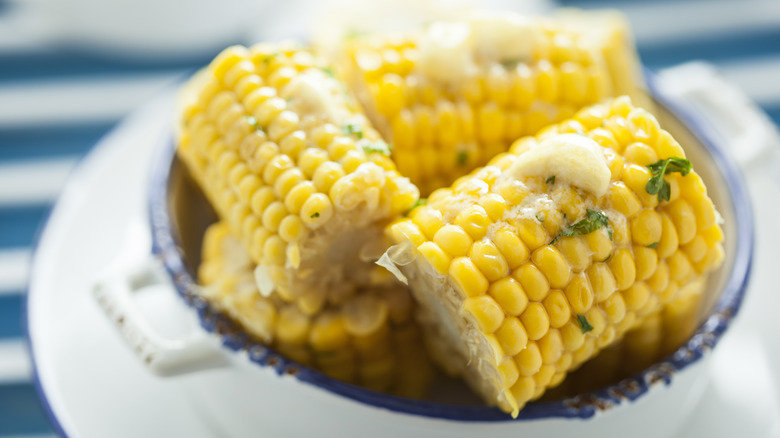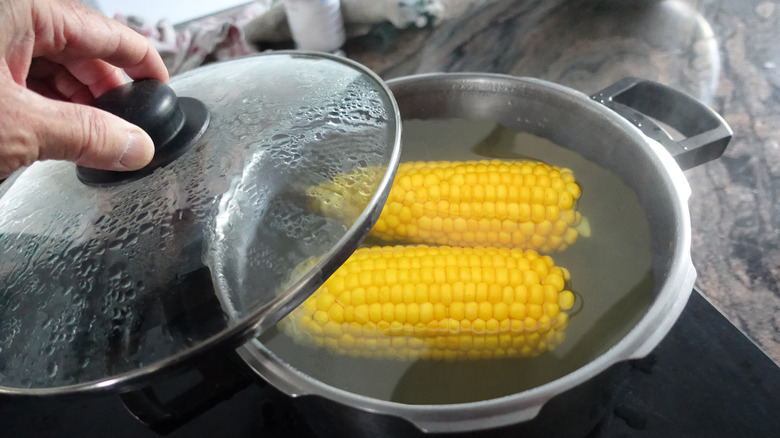Stop Overcooking Corn On The Cob With This Simple Method
Corn on the cob is a staple in summer for all the right reasons. It's sweet, juicy, and comforting – whichever way you're cooking it. Some of us enjoy it plain, while others love to smother it with butter (which you can do without a knife), but one thing that none of us like is chewy, overcooked corn. And if you're boiling your corn, this can happen quicker than you expect. Luckily, there's an easy way to avoid overcooking your corn on the cob.
Instead of dropping your shucked corn into already boiling water, place it into cold water. From here, you can turn the heat on and let the water reach around 180 degrees Fahrenheit. Then, take the pot off the heat but leave your corn to rest in the hot water for 10 minutes.
This method ensures that your corn is cooked on a gentle heat, making it much harder to overdo. The timing doesn't have to be as precise as with traditional boiling, so you don't have to stress about pulling out the corn at the exact minute. And if you don't have a thermometer, bring the corn-filled water to a boil for 2 minutes before turning off the heat and resting for 10 minutes.
Tips for success
When cooking your corn, save the salt for later. Salting the water can actually make the corn tough, and it won't get absorbed by the corn during boiling anyway. It's also important to use a large enough pot and enough water that each ear is fully submerged — this is key for even cooking. While you can rest your corn in the water for longer than 10 minutes, be sure to take it out eventually. Leaving it in for too long can cause the kernels to shrivel up and lose their juiciness.
When resting your corn in the pot, ensure it remains covered. This will help retain the heat so that the ears can continue cooking slowly and evenly. Of course, the juiciness and texture of your corn also depend on its quality, which is why it's important to pick out the best corn possible at the grocery store. Look out for white or green silks and gently feel for ears that are uniform and lump-free. With this simple method, a perfectly juicy and tender corn on the cob is practically guaranteed.

